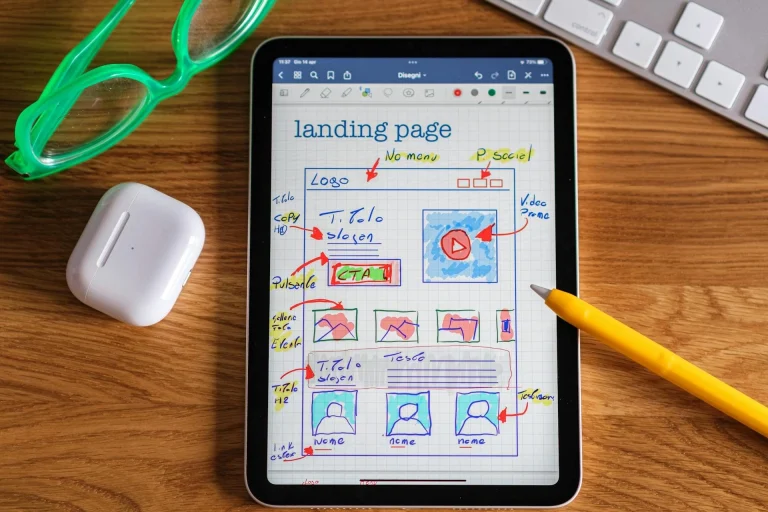Let’s be honest—email isn’t the “hot new thing” in digital marketing. But don’t mistake “old” for “outdated.” In fact, email marketing remains one of the highest-ROI channels for small and medium businesses. Why? Because it lets you build a direct, permission-based connection with your audience—one that isn’t at the mercy of ever-changing social algorithms or rising ad costs.
But effective email marketing is about a lot more than sending the occasional newsletter or discount code. If you want real results, you need to weave email into your overall digital strategy: building your list intentionally, automating key steps, nurturing relationships, and making sure your emails actually land in inboxes.
In this guide, I’ll show you how to get started, what to focus on, and how to sidestep the most common pitfalls. Whether you’re new to email or want to level up your approach, you’ll find practical tactics you can use right away.
Why Email Marketing Still Matters
- Ownership: Unlike your followers on social media, your email list is yours. No one can take it away or limit your reach.
- Personalization: Segment and tailor your messaging for different audiences and customer journeys.
- ROI: Study after study puts email at the top for return on investment, especially for SMEs.
- Automation: Set up welcome emails, follow-ups, and nurture sequences that work while you sleep.
If you’re serious about sustainable, scalable growth, email needs to be part of your digital marketing toolkit. Let’s dig in.
Step 1: Build a High-Quality Email List (the Right Way)
Forget about buying lists or scraping emails. A small, engaged list of real prospects is infinitely more valuable than a huge list of people who don’t care.
How to Start Building Your List
- Lead Magnets: Offer something valuable in exchange for an email address—think free guides, checklists, templates, webinars, or exclusive discounts. For example:
“Download my free Website Launch Checklist and avoid costly mistakes—sign up below!” - Smart Forms: Place signup forms in strategic locations—your homepage, blog posts, exit-intent popups, and your WordPress site contact page.
- Landing Pages: Dedicated pages focused solely on one offer and one action—perfect for ads, social media, or even in-person events.
- Content Upgrades: Offer a related bonus on your blog posts (e.g., “Want the PDF version? Enter your email to get it instantly”).
Quality Over Quantity
Be clear about what subscribers can expect—how often you’ll email, and what kind of value they’ll get. Always ask for permission, and make it easy to unsubscribe.
Pro tip: If you’re not sure what your audience wants, ask! A simple poll or “reply to this email” in your welcome sequence can uncover gold.
Step 2: Set Up Automation to Work Smarter, Not Harder
Manually emailing every lead or customer just doesn’t scale. That’s where automation comes in. With even a basic setup, you can deliver timely, relevant messages that build trust and move people closer to buying.
Key Email Automations for Small Businesses
- Welcome Sequence: Automatically greet new subscribers, introduce your brand, and set expectations.
- Lead Nurture Sequence: Educate and provide value over time (more on this below).
- Cart Abandonment (for ecommerce): Remind visitors who left something in their cart.
- Re-engagement: Win back subscribers who haven’t interacted in a while.
Most popular email platforms—like MailerLite, Mailchimp, ConvertKit, or ActiveCampaign—offer easy drag-and-drop automation builders, even for beginners.
Pro tip: Start simple. Even a single, well-crafted welcome email can make a great first impression.
Step 3: Craft Effective Nurture Sequences
The magic of email marketing is in the follow-up. Most leads won’t be ready to buy immediately—especially for services or higher-ticket products. Nurture sequences help bridge that gap.
What Is a Nurture Sequence?
A nurture sequence is a series of emails that delivers value, builds trust, and gently moves prospects toward a buying decision.
How to Create a Nurture Sequence That Works
- Start With a Strong Welcome:
- Thank new subscribers for joining.
- Introduce yourself and what they’ll get from your emails.
- Provide Value First:
- Share tips, resources, case studies, or stories that solve your audience’s problems.
- Don’t sell right away—be helpful and relevant.
- Build Trust and Authority:
- Explain how you’ve helped others (testimonials, reviews).
- Offer behind-the-scenes glimpses or answer common questions.
- Invite Engagement:
- Ask for replies, survey feedback, or encourage connections on social.
- Make a Clear Offer:
- When it’s time, invite your reader to book a call, download a service guide, or take the next step with you.
Sample Sequence Outline:
- Email 1: Welcome + Lead Magnet Delivery
- Email 2: Your Story + Key Value
- Email 3: Educational Tip or Quick Win
- Email 4: Social Proof or Case Study
- Email 5: Invitation to Take Action (consultation, download, etc.)
You don’t have to write a novel—keep each email focused, friendly, and action-oriented.
Step 4: Maximize Deliverability (So Your Emails Actually Get Read)
It’s no use sending great emails if they end up in spam. Deliverability is a mix of tech setup, content best practices, and sender reputation.
Top Tips for Better Deliverability
- Use a Reputable Platform:
Choose an email service provider (ESP) that takes deliverability seriously. - Authenticate Your Domain:
Set up SPF, DKIM, and DMARC records. This sounds technical, but most ESPs walk you through it step-by-step. - Avoid Spammy Content:
Don’t use ALL CAPS, too many exclamation marks, or suspicious links. - Segment and Clean Your List:
Regularly remove inactive or bounced addresses. Sending to unengaged subscribers hurts your sender score. - Ask Subscribers to Whitelist You:
On your thank-you page or in your welcome email, ask people to “move you to their inbox” or add your email to contacts.
Check Your Metrics:
- Open rates, click rates, bounce rates, and spam complaints all provide clues. If you see a sudden dip, investigate.
Step 5: Integrate Email With the Rest of Your Digital Marketing
Email is most powerful when it’s not an island. Use it to amplify and reinforce everything else you do online:
- Connect With Your Website:
Promote new blog posts, case studies, or digital marketing services via email. - Support Social Campaigns:
Announce giveaways or new offers to your email list and encourage sharing on social media. - Sync With Paid Ads:
Use lead magnets as ad destinations, then follow up with email nurture sequences for higher conversions. - Segment Based on Behavior:
If someone visits your pricing page but doesn’t buy, send a tailored email with FAQs or a time-limited offer.
Don’t Forget: Respect Privacy and GDPR
If you’re in Europe (or serve European customers), always get explicit consent before adding someone to your list. Offer a clear privacy policy and let subscribers manage their preferences or unsubscribe at any time.
Quick FAQ: Common Email Marketing Questions
How often should I email my list?
Consistency matters more than frequency. Start with 1–2 emails a month and ramp up if you see engagement.
What should I write about?
Answer your customers’ biggest questions, share useful resources, showcase client wins, and let people behind the scenes of your business.
Can I automate everything?
You can automate the basics, but don’t lose the personal touch. Occasional real-time updates or personal check-ins go a long way.
Wrapping Up: Make Email Work for Your Business
Integrating email marketing into your digital strategy doesn’t have to be complicated or overwhelming. Focus on building a quality list, automating key interactions, nurturing your audience, and making sure your messages are seen.
Need help getting your email marketing off the ground—or want to plug it into a bigger strategy? Explore my digital marketing services. Whether you’re starting from scratch or looking to optimize your current setup, I’ll help you create a system that delivers value for your business and your subscribers.
Let’s turn your email list into your most valuable marketing asset.





